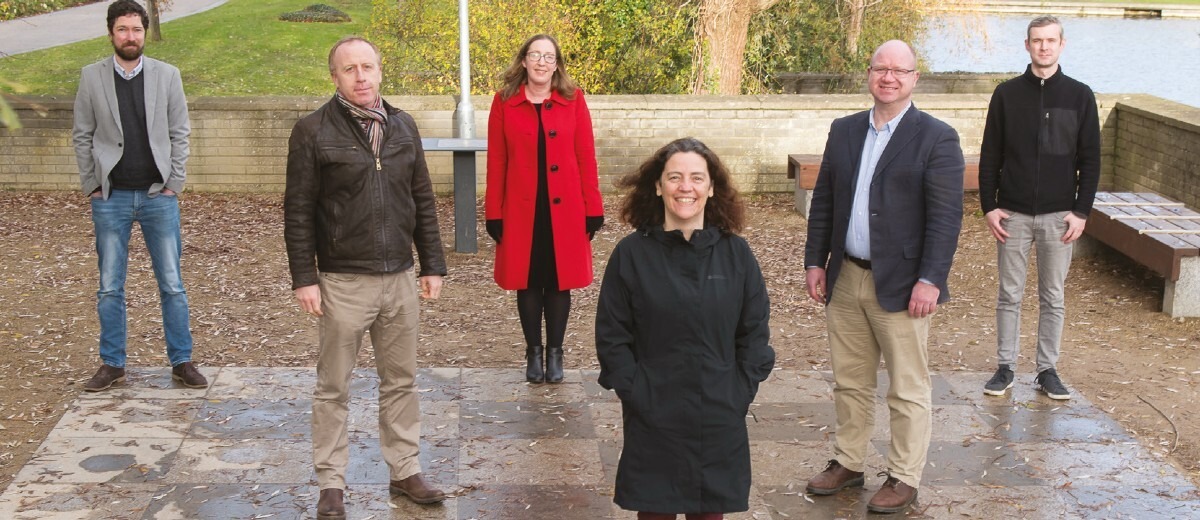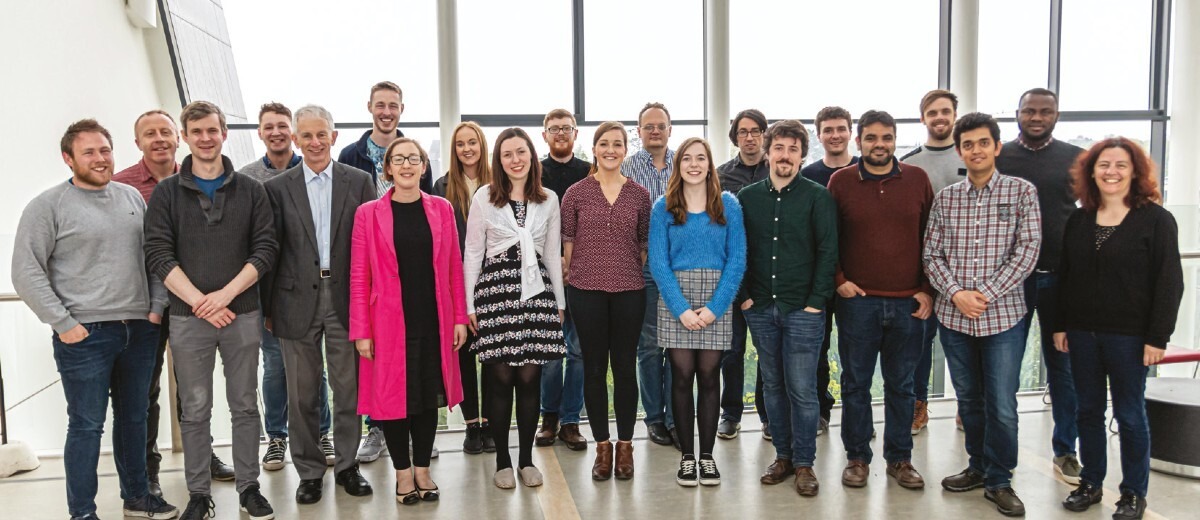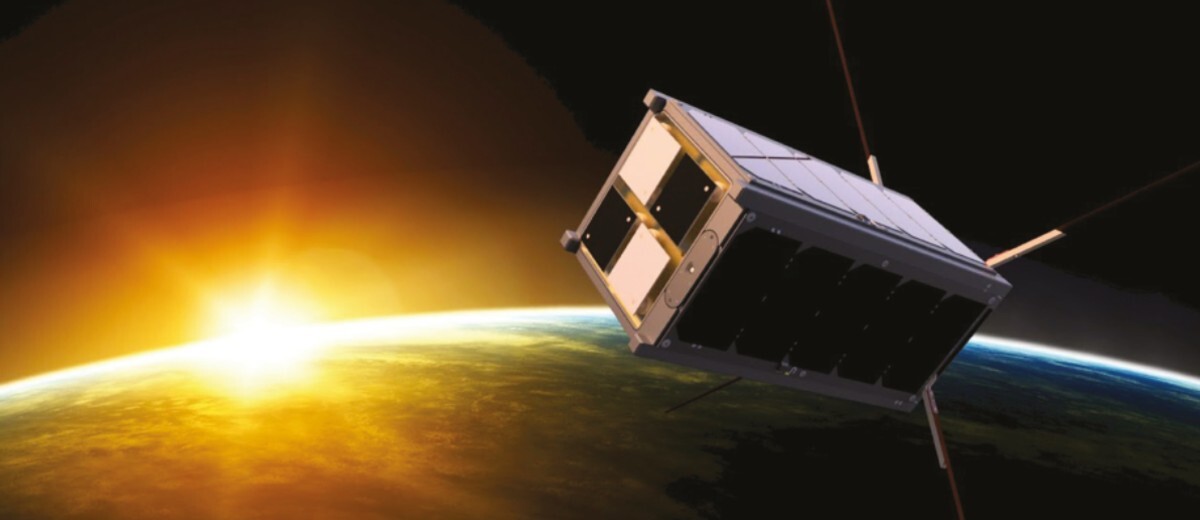Boyle: An’, as it blowed an’ blowed, I often looked up at the sky an’ assed meself the question: What is the stars? What is the stars?
Joxer: Ah, that’s the question, that’s the question: what is the stars?
THE LONG-SUFFERING Juno didn’t have much time for the philosophising of her ne’er-do-well ‘Paycock’, but in fact, the Paycock was giving voice to a question that has motivated Irish women and men for at least 5,000 years. Brú na Bóinne – Ireland’s Valley of the Kings – is dramatic testament to a civilisation that looked skyward and mobilised its society towards creating what may very well be the oldest astronomical observatories in the world.
By the time “Juno and the Paycock” was first staged in 1924, Irish astronomers had been at the forefront of a revolution in astronomy that spanned the Victorian era and into the 20th century, so much so that it was an Irish astronomer who answered Boyle’s question just four years later in 1928: The legendary Sir William ‘Bill’ McCrea, from Ranelagh in Dublin, was one of the first to demonstrate that the sun and stars were made of gas – not iron as most people supposed.
“We have an amazing tradition of brilliant astronomy in Ireland,” observes Professor Lorraine Hanlon, Director of the UCD Centre for Space Research (C-Space), “and to this day we have a very active space and astronomy community.” It is that remarkable heritage – and the huge future potential – that inspired the creation of C-Space in 2020 as a University-wide Academic Centre for space-related research, innovation and education.
C-SPACE
The UCD Centre for Space Research (C-Space) was established in March 2020 and publicly launched on December 15 2020. More than 15 academic staff from five Schools in UCD are involved in this interdisciplinary research centre dedicated to space. The School of Physics plays a leading role in several of the C-Space research themes, including gamma-ray detectors, astrophysics and nanosatellites and payloads.
Today’s space scientists and engineers at UCD are embarked on a vastly different enterprise from the pure research of their illustrious predecessors: “Our purpose is to build partnerships with researchers and innovators across Ireland who may not even realise that space data is relevant to their work, and we want to advance the use of space to address global scientific and societal challenges,” says Professor Hanlon. “We want to bring together the academic researchers with the innovation hubs, to foster an awareness that space isn’t something that just big countries do. We see higher education institutions as knowledge brokers for open innovation. Knowledge co-creation and innovation is fundamental going forward.”
C-Space’s goal is to help build collaborations across UCD, but also nationally and internationally, in furtherance of Ireland’s space ambitions. One obvious example is space-based monitoring of our planet, which has a significant part to play in building a healthy world through data secured
from satellite-based Earth Observation missions.
“Ireland has access to data from the European Union’s armada of Earth Observation satellites,” explains Dr Ronan Wall, the C-Space manager. “Our researchers are already working with these data and with data from other satellites in areas such as Agri-Science, Environmental Science, Big Data, Artificial Intelligence & Machine Learning, Climate Modelling, Ecology, Smart Cities & Transport, Renewable Energy, Archaeology and Geography.”
Professor Hanlon adds: “C-Space aims to create a partnership between innovation and research, because a lot of the applications and benefits of space-based systems rely on actors who would not necessarily have seen themselves as space data users and they haven’t always been aware of the benefits of space data for their work.”

HISTORY
UCD researchers have been pioneers in space science and technology for decades, and the Engineering faculty was a very early innovator in the use of technology satellites. Led by Professor John J Kelly (later Dean of the Faculty of Engineering), a UCD team worked with NASA to use the world’s first direct-broadcasting satellite (think of your Sky dish) for a revolutionary programme of lectures beamed directly to students in the Middle East. SHARE (Satellite Help for Rural Education) was officially launched in the late 1970’s by Uachtarán na hÉireann Patrick Hillery and Crown Prince Hassan bin Talal of Jordan.
“We are immensely proud of this pioneering initiative,” said Emeritus Professor Kelly, “and visitors to the Engineering Building can still see a letter of thanks from the Crown Prince displayed on the wall.” Decades later, UCD’s links with the Middle East remain strong, thanks in part to the satellite-based learning programme, which continues to this day. In the summer of 2021, former President Mary McAleese followed in the footsteps of Dr Hillery and participated in a satellite link-up from Belfield to Bethlehem University. “It was a wonderful event,” said Professor Kelly, “and we are very keen for more people to know about this enormously valuable innovation using space technology.” UCD has also been a world leader for many decades in the development of space technology for high-energy physics research – delving into some of the most violent events in the universe. Starting in the 1960s, the legendary Neil Porter (Professor of Electron Physics) inspired generations of UCD students with his work on gamma rays. Gamma ray bursts appear to be generated in vast cataclysmic explosions, releasing in 20 seconds as much energy as our sun will produce in its entire lifetime. His work was referenced by Professor Stephen Hawking in his famous book A Short History of Time, and the much-loved UCD professor was described in the French version of Hawking’s book as the ‘savant irlandais’!
Neil Porter will forever be remembered as the man who established gamma ray astronomy in Ireland and his students have gone on to bring enormous credit to UCD and to Ireland. The late Trevor Weekes became famous in world astronomy as the architect of the VERITAS telescope array in Arizona’s Sonoran Desert, south of Tucson. VERITAS stands for Very Energetic Radiation Imaging Telescope Array System. “The types of things we look for are pathological — stars that have exploded, the centres of galaxies where massive black holes are accreting matter,” Trevor once told me. “We are looking at energies and conditions that cannot be duplicated on Earth.” Throughout his career, Trevor Weekes devoted considerable time and effort to helping young UCD researchers and he is remembered with great affection by all who knew this gentle, humble and brilliant man. His colleagues in the United States preserve his memory through regular academic meetings which they call ‘TrevorFests’.
Another Neil Porter protegé at UCD, Professor George Miley, went on to pioneer a vast European radio-telescope network called LOFAR (Low Frequency Array), and had a leadership role with the joint US/Europe Hubble Space Telescope project. Professor Miley suggested LOFAR in 1997, and construction across Europe had begun by 2006. Ireland’s newest radio-telescope, iLOFAR, is part of the network and is located at Birr Castle in Co. Offaly. “It is fantastic that it has become a reality now and that it is actually being built,” says Professor Miley. “The project has become much more ambitious than my original plan. I’m a bit proud, I have to confess.”
Professor Miley concludes: “Astronomy is linked to cutting-edge technologies, fundamental science and the most profound culture, so it can be a unique tool for development throughout the world. Fanaticism and nationalism are put into perspective when you show young children how small our world is compared to the universe.”
George Miley served as director of Leiden Observatory from 1996 to 2003 and in 2012 he was made a Knight of the Order of the Netherlands Lion, one of the country’s most prestigious awards, in recognition of his many years of service at the University of Leiden. As C-Space embarks on its ambitious programme, it is clear that they are standing on the shoulders of giants: Every aspect of the work of C-Space is touched in some way by UCD’s rich legacy of space research and innovation dating back all the way to the 1960’s.
“We aim to carry out excellent space-related fundamental and applied interdisciplinary research,” explains C-Space Manager Dr Ronan Wall. “We want to be a key national resource for space expertise and we would hope to inform and support national space policy development and implementation.” C-Space plans to achieve this by fostering industry/academic partnerships and collaborations, and by providing education and training which is relevant to both the creators of space hardware and satellites and those who will use the products of those satellites to provide services and new scientific insights. “A lot of really excellent work is already being done in faculties across UCD,” says Dr Wall, “but we hope to be a catalyst for even greater co-operation across disciplines.”
C-Space has identified six broad areas where it hopes to co-ordinate existing work and undertake internationally significant research of its own: ground- and space-based astrophysics, earth observation, gamma-ray detectors, space structure dynamics and control, space materials, and nanosatellites and payloads.
A CAREER IN SPACE

In addition, of course, C-Space has an important role in UCD’s mission to educate upcoming generations (and life-long learners). It is an interdisciplinary centre, with several constituent Schools, and each of them offer undergraduate and graduate study opportunities in space and space-relevant subjects. Most notable is the MSc in Space Science and Technology, which was established a decade ago after it became clear that Ireland’s fledgling space industry had a need for graduates who already had a broad range of skills relevant to the space sector and who would not require extensive training to slot into existing industry teams.
“This course is the perfect fit for anyone looking to get the best start towards a space-focused career,” explains Katelin Smith, who graduated from the programme in 2018. “Coming from a primarily physics background, this course exposed me to the engineering and design aspects of the space industry. A major highlight of the masters was the mission design field trip to Tenerife. Getting to design an entire space mission in an international team was an amazing experience.”
Another masters student, Meadhbh Griffin, actually got to work on a European Space Agency satellite project while she was on the course, and the mission she worked on was launched into space in the summer of 2021. “I’ve been hugely lucky to get a chance to work on something that will actually be going into orbit,” says Griffin. “Working on flight software means you’re thinking about what you’re doing the entire time, because there is no room for error.” Adding to the challenge, the COVID-19 pandemic meant she had to do much of her software writing and testing remotely, using a laptop with replica boards attached.
EIRSAT-1 PROJECT
But the space mission that Griffin and her colleagues have been most focused upon, and the one that will grab all the headlines in the coming years, is UCD’s own earth-orbiting spacecraft and Ireland’s first satellite: EIRSAT-1, the Educational Irish Research Satellite 1.
In addition to making history, UCD science and engineering students now have the opportunity to develop key skills that are much in demand in space research and the space industry. When it is completed, EIRSAT-1 will carry three experiments into Low Earth Orbit (about 400km above the Earth) aboard a small ‘cubesat’, a miniature spacecraft about the size of a one-litre carton of milk. Despite its small size, EIRSAT-1 promises to make real advances in gamma-ray astrophysics, advanced thermal materials and spacecraft control, and it will test out a unique Antenna Deployment Module which, like all the other experiments, has been developed in-house at UCD.
“All other full members of the European Space Agency already have their own satellites,” observes Dr Wall. “We need to keep pace in this fast-growing area to support Irish industry and research, and this project will build up full spacecraft systems and science payload capability in Ireland for the first time.”
David Murphy, a postdoctoral researcher at UCD and the Systems Engineer on EIRSAT-1, explains: “The most satisfying part of working on EIRSAT-1 is that it has brought together a large team of really dedicated students from across the University that are all focused on working together to turn our individual research topics into something that’s greater than the sum of its parts.”
Rachel Dunwoody is a PhD student who is funded by the Irish Research Council (one of eight IRC-funded students on the project). She is a member of the gamma-ray detector team and is also part of the overall flight operations team: “It is a once-in-a-lifetime opportunity to be on a student-led team that is developing the first Irish satellite. I never imagined I would get this amazing experience so early on in my career,” says Dunwoody.

SPACE AND THE PUBLIC
The EIRSAT-1 project is carried out with the support of the Education Office of the ESA, under the agency’s “Fly your Satellite!” Programme. As a result the staff and students are fully committed to using this historic project as a means of educating people in Ireland about the benefits of space research.
“One particular aspect of the project that I enjoy is the opportunity to share the groundbreaking story of Ireland’s first satellite with the public,” says Lána Salmon, an IRC-funded final year PhD student who leads the EIRSAT-1 outreach activities. She is also a member of the communications team, who works to ensure two-way communications between the ground and the satellite. “Space is engaging for kids and adults alike, and the talks, events and school visits have allowed me to contribute to the project through an activity that I really enjoy.”
Salmon and her colleagues on the communications team have been in close contact with Ireland’s large amateur radio community as they develop the communications system for EIRSAT-1. A dedicated antenna system has been installed on the roof of the Physics Building in Belfield and the team hope to be in contact with their spacecraft two or three times a day once it is in orbit.
“We had to put together a lot of new skill-sets and one of those was communicating with an orbiting satellite,” explains David Murphy. “It has not been the easiest! We always knew we would have to link up with the amateur radio community and I have to say that we have already been getting some fantastic help from them.”
Thanks to this new collaboration between UCD and the radio amateurs, plans are already afoot to allow people across the country to tune in to Ireland’s very own satellite after it is launched sometime in the next several years. UCD alumni who want to take an even more active part in this historic initiative and the public excitement that it is already generating should contact Dr Ronan Wall by email at space@ucd.ie or Jordan Campbell, UCD Foundation at info@ucdfoundation.ie.
EIRSAT-1 is likely too small to be seen in the night sky, but if all goes well it may be in orbit in time for the 100th anniversary of Captain Jack Boyle first asking his famous question on the Abbey stage in 1924. He and Joxer Daly might look up at the sky again an’ ass themselves the question: “What is that new star? What is that new star?”

